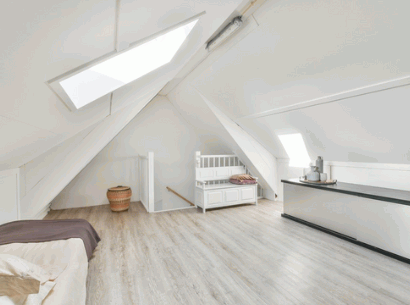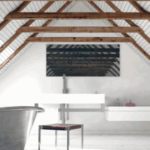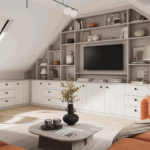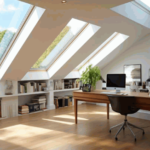Looking to maximize your living space without moving? A Velux loft conversion might be the perfect home improvement project.
This innovative approach not only enhances natural light but also adds value and versatility to your additional living space.
This guide explores what a Velux loft conversion entails, including planning permission requirements, the benefits it offers, and the essential steps involved in making it a reality.
It also covers costs, timelines, and alternatives, ensuring you have all the information needed to make an informed decision.
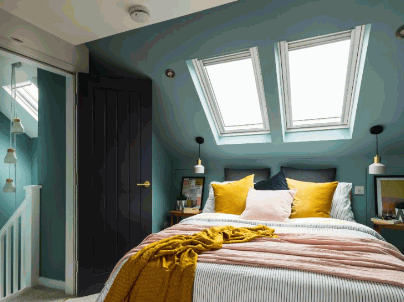
What Is A Velux Loft Conversion?
A Velux loft conversion is a popular home improvement project in the UK, specifically designed to transform unused loft space into an additional habitable room. This type of conversion utilizes Velux windows, which provide natural light and ventilation, enhancing the overall ambiance of the space. Rooflight and skylight loft conversions utilize existing roof structures, making them a cost-effective solution for homeowners looking to expand their living areas without extensive alterations. To ensure compliance with building regulations approval and planning permission requirements, a consultation with a structural engineer and renovation expert advice is often necessary.
Find out more: How Much Does A Shell Loft Conversion Cost
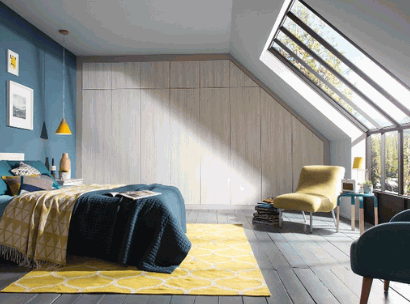
What Are The Benefits Of A Velux Loft Conversion?
A Velux loft conversion offers numerous advantages that make it an attractive option for homeowners, including maximizing natural light through energy efficient windows, which enhances the overall living experience. These conversions not only provide additional living space, ideal for home office ideas or a home cinema, but they are also recognized for their cost-effective conversion process when compared to more extensive structural alterations. With their quick installation timeline and versatile design options, Velux loft conversions significantly increase property value, especially when considering rooflight loft conversions or skylight loft conversions.
Maximizes Natural Light
One of the primary advantages of a Velux loft conversion is its ability to maximize natural light, significantly enhancing the ambiance of the newly created space.
This influx of sunlight not only transforms dim, cramped areas into vibrant workplaces but also positively influences the mood and productivity of those using the space. Studies have shown that ample natural light can lead to higher energy levels, improved focus, and even a reduction in feelings of stress or fatigue. For example, in home offices, daylight becomes essential for maintaining motivation throughout long working hours.
- Different types of Velux windows:
- Standard skylights that provide ample overhead light
- Top-hinged windows for easy ventilation
- Flat roof windows designed for maximum light in horizontal spaces
- Optimal placements:
- Windows facing south to capture sunlight throughout the day
- Strategically placed units to avoid direct glare while maximizing exposure
By understanding how to properly leverage various Velux window types and their placements, one can significantly enhance not only the light within a home office or studio but also the overall emotional and physical well-being of its inhabitants.
Cost-effective
A Velux loft conversion stands out as a cost-effective solution when it comes to increasing usable space in a home, often requiring less investment compared to more extensive types of conversions, like dormer or mansard lofts. This affordability makes it an appealing choice for homeowners looking to maximize their existing roof structure without incurring high loft conversion costs.
Not only is the initial outlay lower, but property owners will also discover that they can save significantly on building control fees and lengthy permit processes. By choosing this type of conversion, they are less likely to encounter stringent regulations that often accompany more complex modifications.
This cost effective conversion approach can lead to a substantial appreciation in property value, providing a lucrative return on investment. A Velux conversion can enhance a home’s marketability and create added financial stability for the homeowner.
- Reduced costs on permits
- Lower building control fees
- Increased property value
Ultimately, the financial advantages associated with this conversion make it an attractive proposition for those aiming to enhance their living space while preserving their budget.
Increases Property Value
Investing in a Velux loft conversion can dramatically increase the property value, as it transforms unused space into desirable additional living space, an attractive feature for potential buyers. This home improvement project not only enhances the overall functionality of a property but also elevates its market appeal, thereby ensuring a strong return on investment.
A recent study indicated that properties with loft conversions can see a value increase by as much as 20%, depending on location and the quality of the conversion. Such spaces can be customized for various uses—perhaps a dedicated home office, a playroom, or even an additional bedroom—that further enhances their allure for a wider range of buyers.
- In urban areas, where space is at a premium, a well-executed Velux conversion stands out.
- Tailoring the design to include natural light and modern aesthetic can also add significant value.
This adaptability not only broadens the market appeal but also caters to the diverse needs of contemporary living, showcasing the potential for substantial gains.
Quick And Easy Installation
The quick and easy installation process of a Velux loft conversion makes it an attractive option for homeowners, allowing them to enjoy their new space without the prolonged disruption often associated with traditional renovation projects. This efficiency is largely due to utilizing the existing roof structure and fewer alterations, which can also simplify compliance with building regulations approval.
Homeowners can generally expect a streamlined timeline, typically spanning just a few weeks from start to finish, especially with professional loft conversion specialists. The process begins with a loft space survey where specialists assess the space, discuss design preferences, and outline the project scope.
- Step 1: Preliminary assessments and planning.
- Step 2: Structural adjustments where necessary.
- Step 3: Installation of Velux windows for natural light.
- Step 4: Interior finishing, ensuring a seamless aesthetic.
Throughout this period, working with loft conversion specialists and structural engineers ensures that every detail is attended to with expertise, minimizing any potential setbacks. It’s crucial for homeowners to stay informed about the necessary regulations, as adherence not only fosters safety but also enhances the overall quality of the conversion.
Versatile Design Options
Velux loft conversions offer versatile design options that can cater to various needs and preferences, whether transforming the loft into a cozy home office, a playroom, or even a home cinema. This flexibility allows homeowners to tailor their space according to their lifestyle, whether it’s a home office, home cinema, or additional bedroom, and evolving needs.
To maximize the effectiveness of these transformations, incorporating energy-efficient windows is essential for enhancing natural light while reducing heating costs, alongside adequate insulation.
Appropriate insulation plays a crucial role in maintaining comfortable temperatures year-round, making any converted loft both cozy and efficient.
Homeowners should also consider distinct layout configurations, such as open-plan designs, to create an airy feel or dedicated zones that cater to specific activities.
Renovation expert advice is invaluable in navigating these choices, ensuring the optimal blend of aesthetics and functionality, which can significantly enhance the overall experience of a loft conversion.
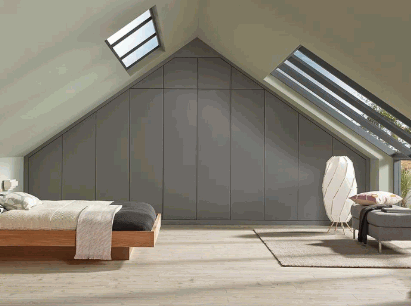
What Are The Steps To A Velux Loft Conversion?
The process of a Velux loft conversion involves several key steps, beginning with an initial consultation to assess the feasibility of the project. Homeowners need to understand planning permission requirements and whether their existing roof structure meets the minimum pitch height for a successful conversion, especially if situated in a Conservation Area. This is followed by a structural engineer consultation to outline necessary alterations and preparations to the loft space, ultimately leading to the installation of Velux windows and ensuring compliance with building control regulations.
Initial Consultation And Planning
The initial consultation and planning phase are crucial steps in the Velux loft conversion process, allowing homeowners to discuss their vision and assess the feasibility of their ideas. This stage includes understanding planning permission requirements and arranging for a structural engineer consultation to evaluate the existing roof structure’s suitability for the intended conversion.
During this preliminary meeting, it’s essential for the homeowner to outline their design aspirations clearly. Discussions may revolve around style, layout, and desired features, providing the necessary backdrop for creative exploration.
Homeowners can anticipate addressing potential structural challenges that may arise during the conversion, such as existing beams or load-bearing walls.
- Understanding the implications of planning permission and the Party Wall Act is vital, as certain local regulations might dictate how the space can be modified.
- A consultation with building control can also ensure that the proposed alterations adhere to safety and performance standards.
By approaching these topics openly, homeowners will not only gain clarity but also foster a collaborative atmosphere with the professionals involved, setting the stage for a successful project ahead.
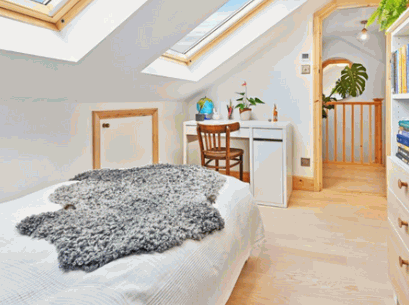
Obtaining Necessary Permits And Permissions
Obtaining necessary permits and permissions is a vital step in ensuring that a Velux loft conversion complies with all legal requirements and is structurally sound, particularly in areas with Conservation Area designations.
This process involves navigating various planning permission requirements and securing building regulations approval, often necessitating a structural engineer consultation to validate the proposed changes, especially regarding the Party Wall Act.
Homeowners typically face challenges such as understanding specific local codes, meeting submission timelines, and addressing objections from neighbors, which can complicate the approval process.
Engaging with officials early can smooth these hurdles and help clarify expectations. Adherence to local building regulations is paramount, as it not only ensures safety but also protects the homeowner’s investment in the long run, a consideration especially vital in an Edwardian cottage or Victorian terrace.
Ignoring these regulations can lead to penalties or the need for costly modifications later on, especially when considering the requirements of Permitted Development Rights.
Here’s a summary of relevant points:
- Types of Permits Required: Planning permission, building regulations approval
- Common Challenges: Navigating local codes, submission deadlines, neighbor objections
- Importance of Regulations: Safety, investment protection
Preparing The Loft Space
Preparing the loft space is an essential step in the Velux loft conversion process, involving various tasks that ensure the area is ready for conversion, including proper electrical wiring and scaffolding.
Before any work commencing, one must clear the space of any clutter, allowing for a smooth workflow and a safer environment. Ensuring adequate ventilation is crucial, as it helps prevent moisture buildup and promotes a healthier atmosphere during construction. It’s important to assess the structure for necessary reinforcements to support the upcoming changes, especially if heavy materials will be used.
- Consulting with a professional helps identify potential issues before they arise, ensuring a seamless renovation experience.
- Adhering to best practices not only enhances safety but also optimizes the final outcome of the conversion.
Ultimately, approaching this phase with thorough preparation can significantly affect the efficiency and quality of the project, making the eventual living space more inviting and functional, and ensuring it meets the standards set by Homebuilding & Renovating.
Proper preparation is key to a successful loft conversion, paving the way for a beautiful new area within your home.
Installing Velux Windows And Roofing
Installing Velux windows and roofing is a pivotal moment in a Velux loft conversion, as these elements bring natural light and ventilation to the newly created space. Utilizing the existing roof structure allows for a seamless installation process that enhances the overall aesthetic appeal, turning an ordinary attic into a vibrant living area.
The decision to incorporate Velux windows plays a crucial role in transforming an underused loft into a modern, functional area. Various types are available, including top-hung, center-pivot, and special-shaped windows, each catering to different architectural styles and needs. These windows not only facilitate adequate airflow, but also boost energy efficiency, significantly reducing heating costs.
- Top-hung windows pivot from the top, allowing for unobstructed views and maximum sunlight.
- Center-pivot windows offer versatility and ease of cleaning, making maintenance straightforward.
- Special-shaped models provide unique design options for creative loft layouts.
While DIY installation may seem tempting, engaging professionals such as Simply Loft or The Rooflight Company ensures compliance with building regulations and delivers peace of mind, knowing that every aspect—from flashing to insulation—is correctly implemented, thus safeguarding the integrity of your home.
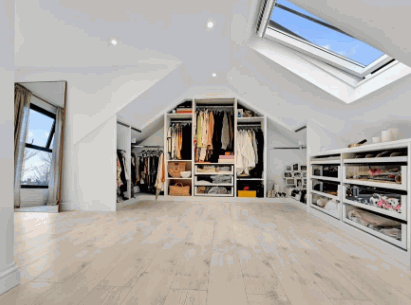
Finishing Touches And Insulation
The finishing touches and insulation phase in a Velux loft conversion is where homeowners can truly personalize their new additional living space, ensuring both comfort and style. This stage includes selecting suitable insulation materials, exploring design options for walls, flooring, and fixtures, and adding final touches that reflect personal preferences.
As this transformative journey unfolds, the choice of insulation becomes critical, with several options available such as fiberglass, cellulose, and spray foam, each offering distinctive benefits for energy efficiency, crucial for a successful Velux loft conversion.
Understanding how these materials contribute to a reduction in heating bills not only impacts the household budget but also promotes environmental responsibility.
Homeowners can enhance their functionality and aesthetic appeal in their Velux loft conversion by choosing complementary colors and textures for finishing details.
- For example, opting for sleek finishes on fixtures can create a modern, minimalist look.
- Thoughtfully selecting flooring can add warmth and character to the loft space.
These finishing touches, combined with effective insulation, promise a harmonious balance of comfort and visual appeal, truly making the loft an inviting retreat.
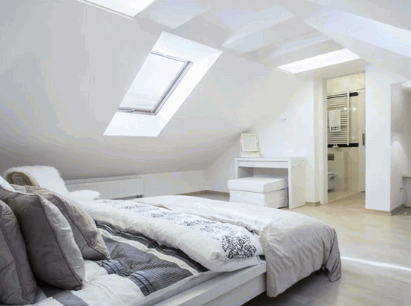
What Are The Costs Of A Velux Loft Conversion In The UK?
Understanding the costs associated with a Velux loft conversion is crucial for homeowners considering this renovation, as various factors influence the overall price. Typically, loft conversion costs are determined by the size and complexity of the project, the type of Velux windows chosen, and any additional features or finishes desired to create a personalized and functional space.
Size And Complexity Of The Project
The size and complexity of the project play a significant role in determining the overall costs of a Velux loft conversion. Larger spaces or those requiring more intricate structural alterations will naturally incur higher loft conversion costs, necessitating a tailored approach to budgeting.
When considering a loft conversion, it’s crucial to recognize that not all projects are created equal. For instance, a simple Velux loft conversion in a compact space may only demand basic alterations and relatively low costs, often ranging from £15,000 to £25,000, depending on the existing structure. In contrast, a larger conversion that requires dormer extensions or bespoke design elements can skyrocket costs to anywhere between £40,000 to £60,000 or more.
Aspects such as:
- Structural reinforcement: Essential for maintaining stability in larger spaces.
- Plumbing and electrical work: Necessary if additional bathrooms or kitchen areas are involved.
- Permits and inspections: Often increase with the complexity of the project.
These components all contribute to the final tally, making it imperative for homeowners to assess their unique requirements and potential structural changes thoroughly before moving forward.
Type Of Velux Windows Chosen
The type of Velux windows chosen for the loft conversion can significantly impact the overall costs, as different styles and features come with varying price points. Selecting the right windows not only affects aesthetics but also energy efficiency, which can lead to long-term savings.
When considering options, homeowners should explore various models such as:
- Standard Roof Windows: Ideal for most situations, these windows offer a clean design and efficient usage.
- Cabin Roof Windows: Perfect for a more traditional look, they provide great natural light and ventilation.
- Balcony Windows: These innovative designs allow spaces to feel more open, offering a miniature balcony experience.
Each style incorporates advanced glazing options that help in minimizing heat loss while maximizing natural daylight. Thus, the choice made today can influence not just the initial investment but also reduce energy bills month after month, adding up to substantial savings over time.
Additional Features And Finishes
Incorporating additional features and finishes in a Velux loft conversion can elevate the overall aesthetic and functionality but will also contribute to the total costs. Homeowners should consider elements such as built-in storage, bespoke furniture, and high-quality materials when planning their budget.
Taking the time to evaluate various optional features can greatly enhance usability and appeal. For instance,
- Installing skylights can improve natural light delivery, creating a more inviting atmosphere.
- Custom shelving solutions not only maximize space but also provide stylish storage options.
- Creating a dedicated workspace can increase the conversion’s functionality, appealing to remote workers.
These thoughtful additions may slightly increase the initial expenditure; however, they can significantly boost the property’s resale value, ensuring the investment pays off in the long run.
Therefore, clearly defining a budget is essential to effectively manage overall costs while achieving the desired outcome.
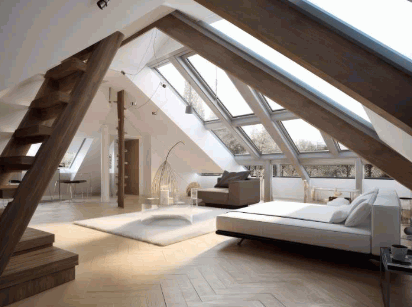
How Long Does A Velux Loft Conversion Take?
The duration of a Velux loft conversion can vary greatly depending on several factors, but on average, most installations can be completed within a few weeks. This timeline often includes obtaining building regulations approval, planning permission if required, and the actual construction and finishing work.
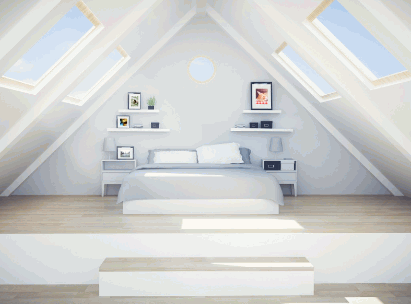
Are There Any Alternatives To A Velux Loft Conversion By Robert Wood?
While Velux loft conversions are a popular choice for homeowners, several alternatives exist that cater to different needs and preferences. Options such as dormer loft conversions, mansard loft conversions, and hip-to-gable loft conversions provide various styles and functionalities, allowing homeowners to select the best fit for their property and lifestyle.
Dormer Loft Conversion
A dormer loft conversion is an alternative that extends out from the roof slope, creating additional usable space and headroom compared to a Velux loft conversion, which fits within the existing roof profile. This style is particularly beneficial for maximizing floor space, making it suitable for larger rooms or family needs.
One of the standout features of a dormer loft conversion is its ability to introduce natural light through strategically placed windows, enhancing the overall ambiance of the space. Unlike Velux conversions, which utilize the existing sloped roof for their windows, dormers can accommodate larger windows, providing expansive views and better ventilation, ultimately transforming any underutilized area into a vibrant living environment. This flexibility in design opens up various possibilities:
- Creating extra bedrooms for growing families
- Establishing an office or study space
- Formulating a playroom for children
These options reflect the versatility of dormer enhancements while increasing the property’s value. Many homeowners appreciate the aesthetic appeal that a well-designed dormer can add to the overall architecture, setting it apart from more conservative Velux options.
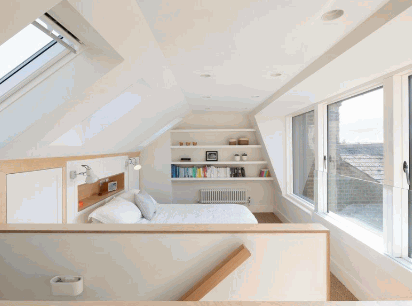
Mansard Loft Conversion
A mansard loft conversion features a distinctive design that involves altering the roofline to create a flat top and steep sides, allowing for maximum headroom and space. This style offers a more substantial transformation compared to a Velux loft conversion and is ideal for homeowners looking to create larger rooms or multiple spaces.
This innovative approach enhances not just livability but also aesthetics. By rearranging the internal layout, homeowners can opt for open-plan designs or secluded bedrooms, catering to personal preferences and lifestyle needs.
The increased value of a property with such architectural elegance is significant, making it a wise investment.
- Benefits of a Mansard Conversion:
- Maximized headroom and floor space
- Improved aesthetics with steep slopes
- Potential for multiple rooms
- Higher property valuation
In contrast, while Velux conversions are generally more affordable and involve simpler alterations to the existing roof structure, they may not provide the same level of design flexibility or increase in living space. Thus, for those looking to pursue extensive renovations, the mansard style stands out as the preferred choice.
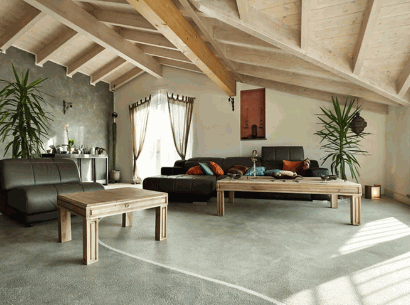
Hip-to-Gable Loft Conversion
A hip-to-gable loft conversion transforms a hipped roof into a gable end, effectively increasing the amount of headroom and usable space available. This alternative provides a more extensive scope for creativity in design compared to a Velux loft conversion, especially for homeowners seeking to maximize their loft space.
When contemplating home renovations, it’s crucial to weigh the benefits of a hip-to-gable conversion. For families, the increased space translates into not just a bedroom or playroom but an area that can adapt to varying needs over time. With this conversion, the opportunities for personalization are vast.
- Enhanced natural light: The gable end design allows larger windows, flooding the space with sunlight.
- Better headroom: Homeowners enjoy more vertical space, making it suitable for taller furniture and a more open atmosphere.
- Versatile layout: Compared to Velux conversions, which may limit room design, a hip-to-gable offers a more flexible floor plan.
It’s also important to consider potential cons such as higher costs and regulatory permissions. By weighing these factors, families can better decide which conversion aligns with their long-term vision.
